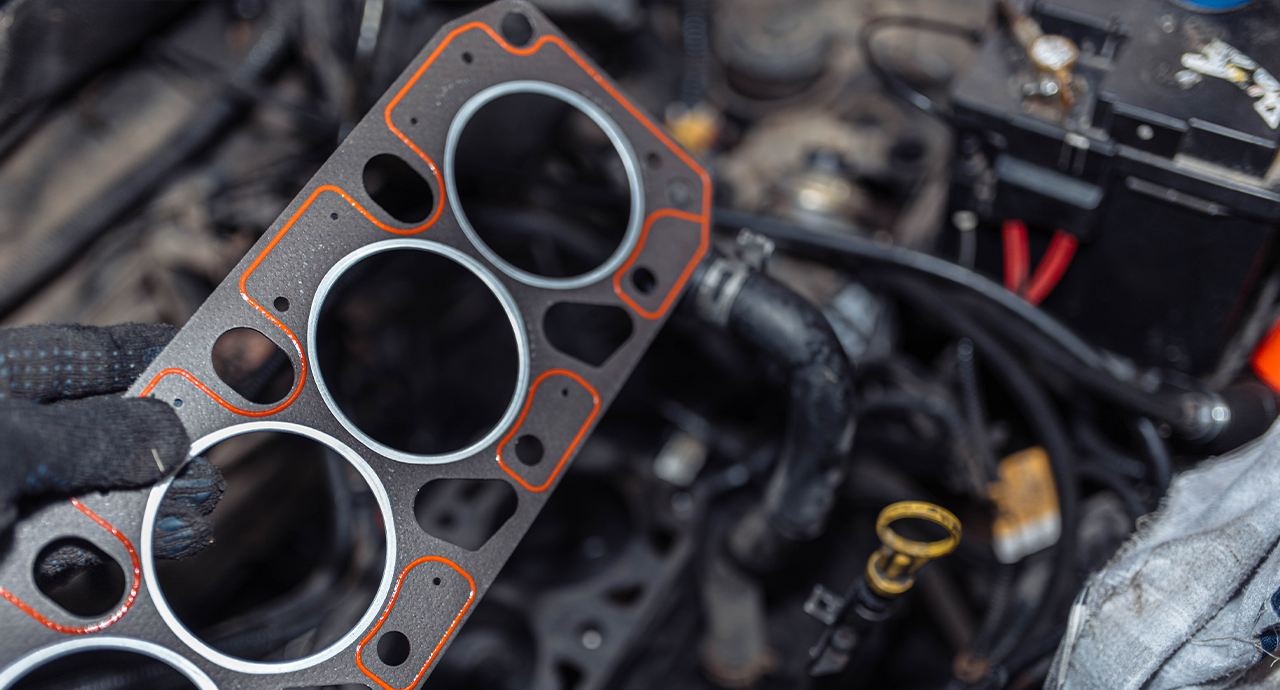What is a head gasket?
The head gasket in your car separates the oil and the coolant in the engine. As its name suggests, it is a gasket, which is located between the cylinder head and the engine block - in the car’s engine. Its main function is to seal the cylinders to ensure the highest compression possible and separates the oil and water; oil to lubricate the engine and water to cool the engine. The head gasket also ensures that the whole internal combustion process is contained within the engine.
Why is a head gasket important?
The head gasket is a critical sealing component of your vehicle's engine. Any potential problem with your head gasket should be dealt with immediately as it can lead to more severe issues developing, which if ignored will increase the cost of your repairs. Once a head gasket is blown, it can cause further damage to your vehicle's engine such as leaks, loss of water, decreased fuel efficiency and overheating. The longer you drive with a blown head gasket, the more damage it will cause to your engine. In the worst cases scenario, if left for a long time you could be looking at a complete engine replacement. That's why you must book a head gasket repair promptly if you notice any of the following warning signs.
What causes head gasket problems?
The head gasket is a very important part of an engine. It can fail due to the engine overheating so it’s always important that you check your coolant level regularly (when the car has cooled down). If you are having to top up your coolant regularly and you can see no water leaks on the ground, then this is a sign that you have a head gasket problem and you should have this checked out as soon as possible. One of the main causes of a damaged head gasket is extremely high engine temperature, and an overheating engine temperature is often caused by a coolant leak. There could be other reasons behind a head gasket failure, including; incorrect coolant inhibitor, the cooling system not working efficiently causing hotspots between the centre cylinders, and pre-ignition problems.
How do you know if you have blown a head gasket?
Warning bells should be ringing if:
- your car's coolant level warning light is on (if the car has one),
- on checking coolant (when the engine is cold) - the level is very low, or if your engine is showing a very high temperature on the coolant temperature gauge (if fitted)
- your vehicle is not running smoothly, or you see light coloured smoke coming out of the exhaust pipe or white discoloured oil on the engine oil level dipstick
These could all be signs of a
blown head gasket and should be promptly seen to by a mechanic.
Can you drive your car with a blown head gasket?
If you suspect that your car has a blown head gasket, do not try to drive it and have it seen to by a mechanic promptly. They may need to have your car towed to their garage to diagnose the issue and either repair or replace the part(s).
How much does it cost to replace a head gasket?
Repairing and replacing a head gasket often requires:
- A new gasket kit and replacement bolts.
- Testing and flattening the cylinder head.
- Replacement of oil filter, oil and ant-freeze.
Head gasket repairs will require the engine cylinder head being removed from the engine block as the gasket sits between these two components. The cylinder head may need to be resurfaced and new bolts will need to be fitted as they can stretch. The work will also involve changing the engine oil and coolant, and all water hoses will be checked at the same time.
If the cylinder head is cracked, it can sometimes be repaired by first being pressure-tested to detect any cracking or warping, which are the results of the high temperatures in which it operates, then being skimmed flat to return it to its proper shape.
As soon as you suspect that you may have a blown head gasket, you should get booked into a garage to have it replaced. The parts and labour costs will vary depending on the garage that you choose to take your car to. All of the above work will probably take a mechanic roughly six hours (depending on the severity) and you have to take this labour into consideration on top of the parts required. Each garage has its own hourly rate and if you enter your vehicle registration number and post code at the top of this page, you’ll be able to compare the labour rates, reviews, distance, and more from all of the top garages in your local area. This allows you to choose a garage that you can trust for a rough price point that is suitable for you.
We all have different needs, and choosing a garage is no different. For some of us, it’s the quality of the overall service which matters most; not just the work that’s done under the bonnet, but the human interaction that comes with it. BookMyGarage allows you to compare Warlingham garages on everything from their waiting room refreshments or whether having your toddler in tow is going to be a problem, to how clearly the staff can explain the work your car requires.










